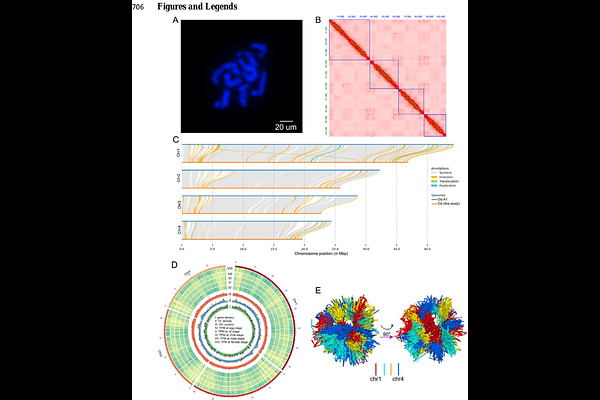Developmental dynamic transcriptomics reveals multiple effectors and transcription factors critical for Ditylenchus destructor parasitism

Developmental dynamic transcriptomics reveals multiple effectors and transcription factors critical for Ditylenchus destructor parasitism
Dai, D.; Chen, Y.; Zhang, S.; Zhou, Y.; Wang, X.; Bo, D.; Liao, Y.; Hu, B.; Zhang, Y.; Ashry, N. M.; Peng, D.; Sun, M.
AbstractPlant-parasitic nematodes (PPNs) pose a significant threat to global agricultural production, yet their fundamental biological research remains relatively limited. The origin and evolution of PPNs remain unresolved mysteries, largely due to the lack of chromosome-level genomic data. Among them, migratory PPNs are considered a key transitional stage from free-living to obligate parasitism, as they exhibit both plant parasitism and fungal feeding. In this study, we constructed the chromosome-level genome of the sweet potato rot nematode and confirmed its genome comprises four chromosomes through Hi-C and karyotype analysis. Comparative analysis with two migratory PPNs, B. xylophilus and A. besseyi, revealed that the Nigon elements of B. xylophilus are largely conserved with those of the model organism C. elegans, whereas D. destructor and A. besseyi underwent extensive Nigon element recombination. Notably, these recombination events were highly correlated with their colinearity of protein sequences. Furthermore, transcriptomic analysis across five developmental stages of D. destructor identified numerous stage-specific effectors and transcription factors. RNAi experiments demonstrated that these genes play crucial roles in embryonic development and parasitic capability. Overall, this study not only provides valuable genomic and transcriptomic resources for PPNs but also uncovers key aspects of their genome evolution and parasitic gene functions. By elucidating the genetic basis of their evolutionary transitions and host adaptation, our findings lay a crucial foundation for advancing the understanding of PPN biology and their impact on agricultural systems.